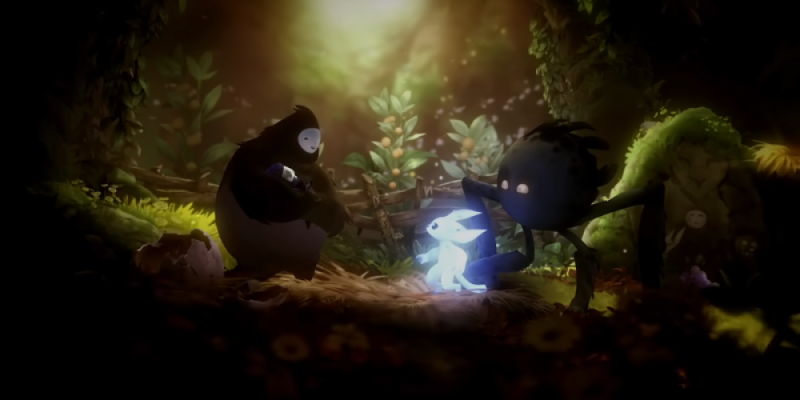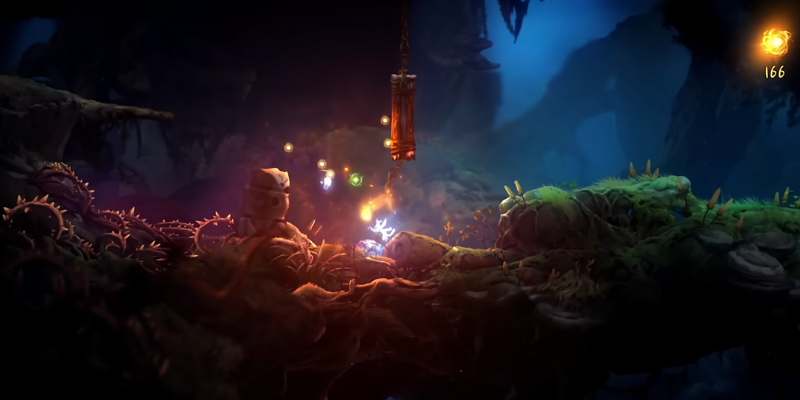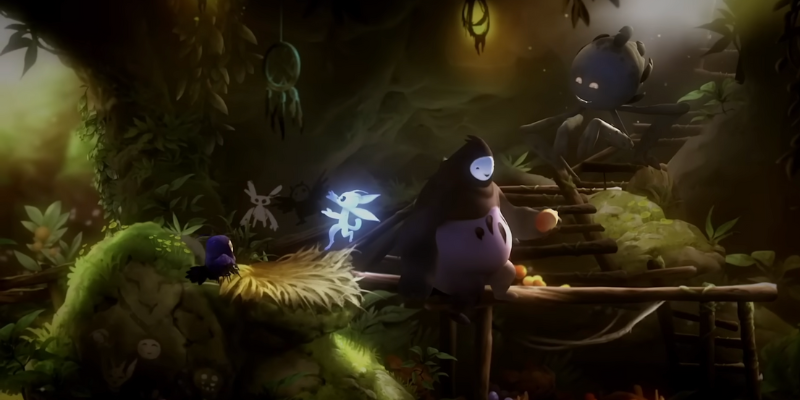
- 25 Apr 2024
Ori and the Will of the Wisps: A Visual Journey Through Captivating Landscapes
Building upon the success of Ori and the Blind Forest, Ori and the Will of the Wisps mesmerizes with a captivating story told through breathtaking visuals that take players on a journey through stunning landscapes. This platformer by Moon Studios paints every frame with a delicate touch, focusing on an intricate design that brings its world to life with lush environments and immersive atmospherics. This article explores the various captivating landscapes presented in the game, with a deep dive into the artistic and thematic significance of each area, contributing to a comprehensive understanding of the game’s visual artistry and storytelling prowess.
Inkwater Marsh: A Lush Beginning
The adventure begins in Inkwater Marsh, a region teeming with vibrant flora and fauna, serving as the nurturing cradle for our protagonist. The palette here is rich with verdant greens and soft browns, setting a lively yet soothing tone for the journey ahead. The design incorporates elements like dangling vines, fluttering leaves, and bubbling streams, creating a dynamic yet harmonious atmosphere. The lighting plays with shadows and sunlight filtering through the foliage, enhancing the depth and intricacy of the scene. This area not only serves as an introduction to the game's mechanics but also immerses players in a world that is alive and responsive.
Wellspring Glades: A Community Hub

Wellspring Glades functions as the heart of the community within the game, where many characters and stories intersect. This area contrasts starkly with the solitude of other regions. Structures crafted from natural elements, like wood and stone, are nestled among cascading waterfalls and gentle streams, underlining the game's theme of harmony between civilization and nature. The area is bustling with activity and characters going about their daily lives, which adds a layer of vitality. Community events that unfold here are depicted with warm tones and soft, ambient lighting, reinforcing the feel of a safe haven.
The Spider Caves: Echoing Isolation
In stark contrast to the beginning areas, the Spider Caves introduce a sense of dread and isolation. Shadows dominate the landscape, with occasional pinpricks of light creating a stark, almost eerie contrast. The presence of delicate yet menacing web structures across the caves adds a tactile sense of danger. The visual claustrophobia achieved here is palpable; the tightly enclosed spaces and minimal light emphasize the protagonist's vulnerability and the overarching sense of peril that permeates this region of the game.
Luma Pools: A Serene Aquatic Tapestry

Luma Pools is perhaps one of the most visually arresting areas within Ori and the Will of the Wisps. Here, the color scheme shifts to vibrant blues and purples, with bioluminescent plants and creatures illuminating the waters. The fluidity of movement within the water, coupled with the gentle play of light as it dances through the aquatic environment, creates a serene atmosphere. This area’s visual appeal is not just in its tranquil beauty but also in the fluid mechanics that challenge the player in new and engaging ways.
Mouldwood Depths: A Haunt of Shadows
Mouldwood Depths presents a drastic shift as players plunge into a realm devoid of light. Here, gameplay and visuals blend seamlessly, as visibility becomes a resource just as crucial as health or energy. The darkness is oppressive, pierced only by the bioluminescent flora and fauna that hint at the dangerous creatures lurking. The use of minimal lighting not only significantly impacts gameplay but also elevates the aesthetic tension. The creepy crawlies and the soundscape contribute to a feeling of a living, breathing environment that’s both beautiful and menacing.
Windswept Wastes: Barren Beauty

Contrary to the lush scenes of the early game, Windswept Wastes offers a palette of soft sands and stark, bright skies. The desolate beauty of this area highlights themes of solitude and perseverance. Sandstorms whip across the screen, distorting visibility and altering the landscape, creating a dynamic environment where visuals literally shift with the winds. The shifting sands serve as both a gameplay mechanic and a narrative metaphor for the ever-changing challenges that the characters face in their journey.
Willow’s End: A Climactic Convergence
The journey culminates at Willow’s End, where the decay and regrowth theme of the narrative are visually represented. The area combines elements from all previous environments, symbolizing the culmination of the journey. Fiery reds and oranges clash against the dark, corrupted blues and purples, reflecting the battle between life and decay. The visual intensity here is unmatched, with each area designed to reflect the final stages of an epic saga.
Conclusion
Ori and the Will of the Wisps is a masterpiece of visual storytelling, where each area is not just a backdrop but a character in its own right, contributing to the narrative and emotional journey of the players. The game uses its environments to amplify themes of hope, resilience, and rebirth, making every moment spent in its world both a challenge and a delight. Through its captivating landscapes, Ori and the Will of the Wisps offers more than just a game; it provides an immersive visual journey that resonates deeply with those who traverse its enchanted paths.

0 Comments
Leave a comment
Your comment is awaiting moderation. We save your draft here